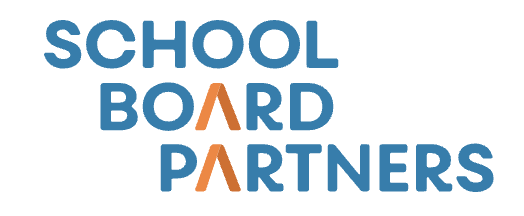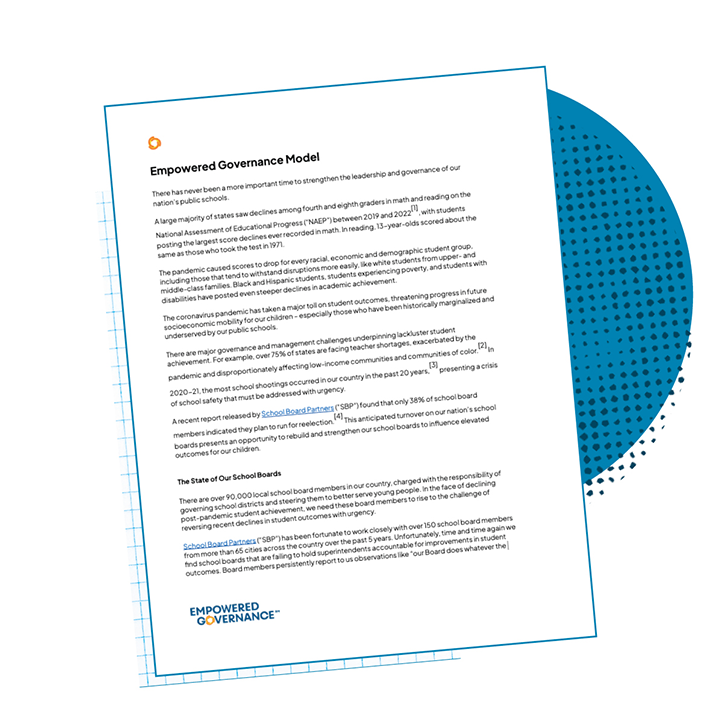Policy Toolkit
Student-Centered Budgeting
The Budget and Finance policies establish foundational procedures for a robust and transparent budget approval process. The policies also ensures the annual budget intentionally allocates resources to align with the strategic plan and the improvement of student outcomes. (Developed with input from Edunomics Lab at Georgetown University)
Be sure to check out all of the great toolkit resources below the policies.
Examining Equity
Spending vs. Outcomes
Edunomics Lab developed interactive data displays to explore resource equity, how dollars are allocated to schools, and which schools are most able to leverage their money to maximize student outcomes. Users can explore and filter by specific districts, school characteristics and student demographics. Read More
Using Data to Improve Budgeting Processes
Time to Change the District Budget Dance
The school district budget dance—the process of developing and passing a budget every year—usually runs on something approaching autopilot. There’s a series of choreographed moves with the same rehearsal schedule and the same cast year after year, with built-in deference to continuing whatever was done the year before. Read More
The Grid: A Framework to Explore Budgeting Choices
The Grid helps school, district, and state leaders strategically weigh proposed investments to assess which can do the most for students with the dollars at hand. It offers a roadmap for deciding what budget options to pursue, and which to sustain, modify, or cut to meet evolving student needs and academic goals. Read More
Staffing v. Enrollment Trends
How does the number of staff compare to the number of students in your state or district? How has that changed over time? Read More
Using Funds Strategically
Responding to a Tight Teacher Labor Market
Staffing challenges vary by community and by position, and the solutions should vary as well. As districts work on staffing for the coming school year, they have an opportunity to be creative about how they attract and retain talent. Read More
The Promise Of Cafeteria-Style Benefits For Districts And Teachers
This brief describes how a different method of supplying benefits to employees might work for districts: cafeteria plans. While typical school district plans offer a one-size-fits-all package of benefits to employees, cafeteria plans allow employees to customize their benefits within a given cost. Read More
Rethinking Class Size to Expand Access to Best Teachers and Raise Pay
This presentation at the Annual Education Finance and Policy conference
explores and models cost-neutral options to raise teacher pay and give more students access to the best teachers. Read More
Contracting
Districts are Sending Large Sums Out the Door to Vendors
The monumental surge in contracting is being fueled by the infusion of federal relief funds. Read More
Allocating Dollars to Schools
Student-Based Allocation
A growing number of states and districts are moving toward distributing dollars based on the needs of designated student types—such as students living in poverty or who are English language learners—rather than doling out resources based on one-size-fits-all staffing or instructional delivery models. Read More
VisionSBA: k-12 Financial Modeling Tool
VisionSBA provides education leaders with a unique outlook on spending by school level within a district, delivering insight into relative spending across schools adjusted for each school’s actual mix of students. This interactive tool developed by Marguerite Roza and Jim Simpkins answers the question: “How much does each school spend relative to all other schools in this district taking into account its particular mix of students?” Read More
Understanding State Budget Formulas and their Impact on District Budgets
When It Comes to School Funds, Hold-Harmless Provisions aren’t “Harmless”
Funding crunch is a chance to revise, remove arcane, inequitable grandfather clauses Read More
Hot Topics
Esser Expenditure Dashboard
This dashboard tracks CARES ESSER I, CRRSA ESSER II and ARP ESSER III expenditures that districts have submitted for reimbursement.Read More
The ESSER Fiscal Liff Will Have Serious Implications for Student Equity
When the nation’s schools closed to in-person learning, there was little warning and no precedent that could accurately predict the effects. Now that the dust has settled, it’s clear that higher-needs students suffered the greatest harm, such that they are now even further academically behind their more advantaged peers. Read More
Toolkit Partner
Developed with input from Edunomics Lab at Georgetown University
Don't Know Where to Start?
Are you driven by a passion to create change? Do you have skills, ideas, and energy to contribute? We're inviting you to be a part of our dynamic team where innovation thrives and impact is tangible.




